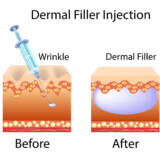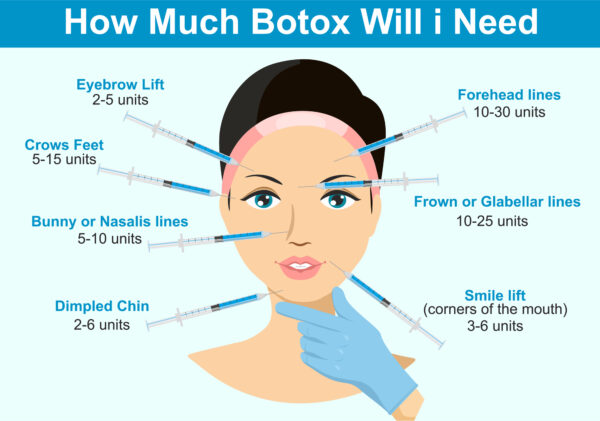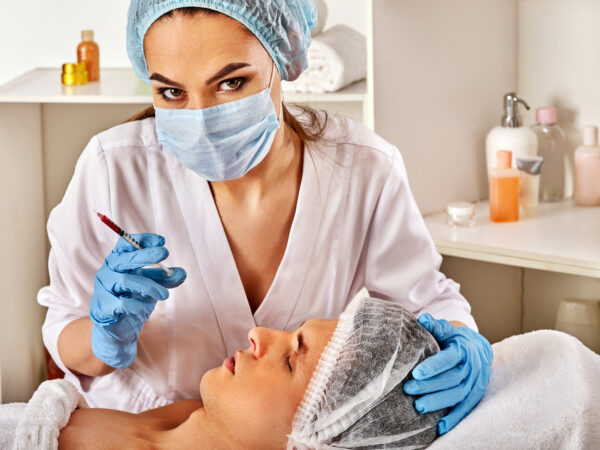Does Anya Chalotra Have Botox or Plastic Surgery?


There has been talk amongst fans that Anya Chalotra may have used Botox.
See the reality behind Anya Chalotra’s plastic surgery claims here! These rumors regarding Anya Chalotra, a British actress, and her rumored plastic surgery are being investigated.
Who exactly is Anya Chalotra?
Actress Anya Chalotra was born in the UK. The year 1996 marks her year of birth. She was born in Wolverhampton, England, to Indian parents. Together with her parents, two younger brothers, and an older sister named Reeya, Anya grew up in the town of Lower Penn in the county of South Staffordshire.
Anya completed her formal education at St. Dominic’s Grammar School in Brewood. She then spent a year studying acting at the prestigious London Academy of Music and Dramatic Art. She enrolled in the Guildhall School of Music and Drama’s grueling three-year acting program to hone her craft even further.
Anya’s passion and dedication to her studies were obvious during her whole time in school. She learned all the ins and outs of acting, from acting itself to stagecraft to technique. She studied at both LAMDA and the Guildhall School of Music and Drama, which honed her skills and set her up for a fruitful acting career.
The British actress Anya Chalotra has received numerous accolades for her performances in both film and television. Her magnetic stage presence and nuanced portrayals have impressed both audiences and critics. Anya brings a fresh perspective to her roles because of her multifaceted cultural background and significant training. Her acting is rich with depth and sincerity.
Talent, dedication, and adaptability have helped Anya Chalotra carve out a niche for herself in the entertainment world. Her ability to captivate viewers and draw them into her stories is on display in all of her work. She rose from her impoverished childhood in Wolverhampton to establish a successful acting career that serves as an example to young actresses throughout.
Anya Chalotra Cosmetic Surgery
The rumors that Anya Chalotra has undergone plastic surgery regarding her appearance are widespread. She is well-known for her role as Yennefer Vengerberg in “The Witcher.” Botox and rhinoplasty rumors abound. Speculation arose after her debut in the United Kingdom, as onlookers noticed a little alteration to her appearance.
While a cursory glance might not reveal any differences, those who examined the images more thoroughly could see that her face had become more defined and angular. Several of her admirers think she has had cosmetic surgery to achieve her current look. Remember that Anya Chalotra’s weight loss has also slimmed down her face. Her nose appears smaller than before, despite the fact that her body size has remained the same.
Fans wonder if Anya Chalotra has had plastic surgery on her nose. Her nose is much more refined and pointed now than it was before. Her nose seems narrower than usual. Fans speculate that she may have also used Botox. Some of her recent images suggest that her skin is extremely smooth, which may be the result of cosmetic treatments.
Considering alternative explanations is crucial. The fact that Anya Chalotra likes dewy skin and has a specific skincare routine is public knowledge. The coconut oil, Pill, and rose hemp oils she uses regularly have all been mentioned as her favorite skincare products in interviews. Her glowing skin could not be the consequence of Botox or other cosmetic operations but rather of her careful skincare routine.
Anya Chalotra has not yet commented on rumors that she underwent plastic surgery. The veracity of these assertions is still up in the air.
Due to the risks involved in plastic surgery, many people opt instead for non-invasive procedures like Botox. Additionally, if the medical professionals injecting the patients with Botox are skilled, the results will be more subdued and natural-looking than if the patients had undergone artificial enhancement.
The Dentox program is a great resource for medical professionals interested in perfecting their Botox injection technique. Get up to speed on the most recent methods for boosting your patients’ health and happiness. Both online and in-person patient training sessions are described in greater detail at https://dentox.com/all-courses/botox-training/ and https://dentox.com/live-courses/.
Age of Anya Chalotra
UK-born Anya Chalotra is a British actress who was born in 1996. In 2023, she will have reached the age of 26. Although she was born in Wolverhampton, England, she spent much of her childhood in the American Midwest.
In her twenties, Anya Chalotra, a child of the mid-1990s, developed a strong interest in acting. She has received numerous awards and accolades over her successful career in the entertainment world.
Anya Chalotra’s ascent to stardom can be attributed to the charisma and skill she displays onstage. With every performance, she leaves an indelible mark on her audience. She has impressed people with her dedication to developing her acting abilities.
The British actress Anya Chalotra has impressed both critics and fans. Her charisma and ability to command attention on television have opened doors for her. With each new role, she further establishes herself as a key player in the acting industry.
Anya Chalotra has shown remarkable perseverance and dedication throughout her life. She’s in her mid-20s, and her skill, enthusiasm, and commitment to her work shine brightly as guides to even greater achievements in her future. Her work as an actress has already begun to influence the industry. People are looking forward to what she does next.
Tips for Administering Botox Correctly and Effectively


Before administering Botox, informed consent is necessary to assess the patient’s health, allergies, medications, skin, facial anatomy, and cosmetic goals.
Botox is an effective method of improving the look of the face by temporarily paralyzing the muscles responsible for wrinkle formation. Injecting it properly and avoiding side effects calls for skill and precision. Hence, it is imperative that you acquire the fundamental skills necessary for the proper and efficient administration of Botox. Here are a few of the most important skills you’ll need to have under your belt:
Informed consent and patient preparation:
It is important to get a full picture of the patient’s health, allergies, medications, skin, facial structure and desired aesthetic outcomes before administering Botox. In addition to the process itself, you should inform them about its advantages, hazards, alternatives, restrictions, cost, frequency, duration, and expected consequences. Get their signed consent only after you have established that they fully understand and accept the terms and conditions.
Safe methods for storing, reconstituting, and diluting Botox:
Botox is a delicate substance that must be stored in a cool environment between 2 and 8 degrees Celsius. It comes in powder form and needs to be reconstituted with a sterile saline solution before being injected. The volume and concentration of Botox dictate the amount of saline utilized. The suggested dilution rate is between 1 and 4 ml per 100 units of Botox. Using a sterile syringe and needle, withdraw the solution from the vial and carefully swirl it without shaking or disturbing the contents.
Methods of injecting various facial regions:

Botox can be injected into various facial muscles to achieve varying effects.
Depending on the desired result, Botox can be injected into different facial muscles. Common injection sites include the forehead (to smooth out horizontal lines), the glabellar region (to reduce vertical frown lines), and the lateral canthal region (to get rid of crow’s feet). In addition, there are the platysma bands and the nose (to erase the appearance of bunny lines), the chin (to smooth out any dimpling), the lips (to hide the appearance of vertical lines), the marionette lines (to make a sad smile less obvious), and the lips (to tighten the neck). Methods of injection change with respect to the target area, muscle size, injection depth, injection direction, and medication dosage1. If you want to inject Botox into specific muscles without damaging nearby blood vessels or nerves, you’ll need to use a very thin needle (at least 30 gauge).
Taking care of potential side effects and complications:
It is possible for Botox injections to go wrong even when done properly, leading to problems like infection, bruising, swelling, an allergic reaction, nerve damage, drooping eyelids, facial asymmetry, and even botulism1. You should be able to spot these issues right away and provide them with the care they need. Patients should be taught self-care techniques for avoiding and overcoming these issues. Instruct them not to touch or massage the injection sites, to avoid activities that raise blood pressure or perspiration, to contact you at the first sign of infection or systemic toxicity, and to schedule regular health checks. Learning these fundamentals will help you give your patients the most beneficial Botox treatments possible.
The successful completion of one of the many excellent Botox training programs will pave the way to a rewarding career in the beauty business. Jump right into a course led by recognized authorities on botox. You may learn to use Botox to its utmost capacity and impress every client who walks through your door if you put in the time and effort.
A training program called Dentox teaches medical and cosmetic professionals the best ways to give clients Botox injections. With Dentox’s aid, you can expand your business and give your patients greater treatment.
Dr. Howard Katz is largely regarded as the foremost expert in injectable training. He does both traditional classroom instruction and online delivery.
Dentox provides Botox training in both virtual and in-person formats; the virtual version can be found at https://dentox.com/all-courses/botox-training/, while the live version can be found at https://dentox.com/live-courses/.
How do Botox® Laws Vary from State to State?

Injecting Botox® is a non-surgical treatment that can improve your appearance and health in a variety of ways. Millions of doses are administered every year in the United States alone, making it the most popular injectable treatment for cosmetic purposes.
Botox could be a lucrative addition to your practice if you own an internal medicine or pain clinic and intend to use it to address medical concerns like persistent migraines, or if you run a medical spa and intend to use it to treat aesthetic issues like glabellar lines. However, Botox is a restricted substance that is not accessible over the counter and is not available to all medical and aesthetic professionals.
Before advertising Botox treatments, it is crucial to learn the laws in your state. What follows is information on how to locate approved Botox courses that meet local credentialing standards, as well as state rules regarding who can offer botulinum toxin treatments.
The legality of Botox Injections across the United States

Regarding the use of botulinum toxin and other injectables for aesthetic purposes, each state has its own set of laws.
Each state has its own set of regulations concerning the use of botulinum toxin and other injectables for cosmetic purposes.
It is generally accepted that medical doctors and plastic surgeons who hold active state licenses and board certifications may perform these procedures themselves, so long as they do so in a manner that complies with all relevant regulations. Botox can be administered by dentists and oral surgeons as well, though some states only allow them to perform procedures that fall under the state-defined “scope of dental practice.”
Regulations for Other Service Providers
In addition to physicians and plastic surgeons, the following medical practitioners are allowed to inject Botox under medical supervision:
- Physician’s assistants
- Nurse practitioner
- Registered nurse
When we talk about “supervision,” we are referring to working for a legitimate medical or cosmetics clinic. The supervising provider need not be present during the procedure (but may be required to do so in some states).
Further, in some jurisdictions, medically trained aesthetic nurses and certified medical aestheticians can administer Botox under a doctor’s supervision. There may be limitations on the types of services that can be provided until these providers complete the necessary training and certification programs.

Botox can be given under a doctor’s supervision by medically trained aesthetic nurses and certified medical aestheticians in some states.
Explore the Botox Regulations in Your State
There is a possibility that state laws that govern injectable treatments will be revised periodically. To ensure your compliance with applicable legislation, you can take the following steps:
- Ask if other nearby medical professionals provide Botox by contacting your state professional association.
- Get in touch with the medical licensing board in your state.
- Check the archives of your state legislature for the applicable statutes; this may take some time.
Since state regulations vary, it is best to check with your own state’s medical board to get the most up-to-date details. Visit https://dentox.com/medical-dental-and-nursing-state-boards/ to find the appropriate medical board in your state and their contact information.
Locate a Botox Training Program with Credentials
If you want to make sure you or your team of providers can legally administer Botox in your state, enrolling in a Botox course that satisfies state requirements is the best way to go.
Both specialized courses devoted solely to Botox administration and more comprehensive Botox and filler training programs covering a wide variety of aesthetic treatments fall under this category. Whatever its scope, it ought to include subjects like:
- Methods for administering Botox and advice on where to and where not to inject the drug
- Managing and storing botulinum toxin treatments safely
- State-by-state laws governing botox
- Planning for patient admission and treatment
- Contraindications, side effects, and Aftercare
If you are interested in enrolling, make sure that the training program is open to providers with the appropriate credentials and not just plastic surgeons and medical doctors.
Finally, being qualified to inject Botox properly calls for a great deal of education and experience. Training from Dentox can improve both the standard of care you deliver to patients and the profitability of your business. Online Botox training can be found at https://dentox.com/all-courses/botox-training/, while training with real patients is offered at https://dentox.com/live-courses/.
Dermatologists Have Found That “Traptox” Can Alleviate Neck and Shoulder Pain


Botox has long been used to relax stressed muscles such as the trapezius.
Does Botox have any limitations? It has been shown to reduce the appearance of fine lines and wrinkles, put an end to underarm sweating, and even forestall migraine headaches. It has a wide variety of possible off-label applications. You have probably seen a few “TrapTox”-loving videos on TikTok. Botox injections into the trapezius (trap) muscles are the latest trend in cosmetic procedures, and they can make your neck and shoulders look longer and leaner.
Trapezius Botox: What Is It?
Botox may be the trend now, but it has been used for years to calm down overworked muscles, including the trapezius. Daily life would be impossible without the trapezius muscles, which stabilize the neck and shoulders and allow for proper posture. Yet certain weightlifting workouts, reaching overhead, bad sleeping postures, and slouched sitting might irritate and expand them. If you have an overworked and short-appearing neck, Botox treatment of the trap muscles may help.
Botox can also be used to treat muscle spasms and reduce the size of the trapezius muscle. Botox injections into the traps have been shown to alleviate chronic migraines and intractable muscular knots.
Advantages of Botox for the Trapezius Muscle
- Trapezius muscle relaxation
- eases pain and stiffness
- Reduces the effects of excessive muscular contraction
- Makes the shoulders and neck appear long and slim.
The most important result of the therapy is pain relief from the partial relaxation of overworked muscles. Many people have tight trapezius muscles, which can lead to stiffness and soreness in the shoulders. The big trapezius muscle group can be injected with Botox or another neuromodulator to relieve tension in the area of headaches and stiff necks.

The primary benefit of Traptox is reduced muscle tension and soreness.
TrapTox might give the appearance of a longer neck and leaner-looking shoulders from an aesthetic perspective. The injected muscles shrink in size and volume as a result of Botox’s relaxation and partial inactivation of the muscles. Botox injections into the trap muscles can help relieve overly tight muscles, allowing the front and back of the upper body to be more evenly distributed to improve posture. The ability of Botox to diminish trapezius hypertrophy has been clinically demonstrated with a statistically significant difference in thickness.
Preparation for Trapezius Botox
The preparation of the trapezius Botox treatment adheres to the same protocol as all other Botox treatments. There is no extensive preparation necessary, but there are a few things you should and shouldn’t do in the days leading up to your injections to improve the treatment’s efficacy. First, attempt to relax the musculature as much as possible to alleviate stress and tension. To refrain from exercising at least two hours before TrapTox and for the remainder of the day.
Alcohol can also increase swelling and bruising, so it’s best to avoid it for at least a week before the injections. Aspirin and other anti-inflammatory drugs should be avoided a few days before your Botox session, and blood thinners should be avoided for a week prior, due to the increased risk of bleeding.
Effects That Could Happen
The risks associated with Botox injections for the trapezius muscle are similar to those associated with Botox injections for fine lines and wrinkles, and the therapy itself is straightforward. Injections typically result in some degree of redness, swelling, and bruising. Also, a diffusion effect may occur if the toxin is injected incorrectly, leading to flu-like symptoms and muscle weakness. That’s why it’s crucial that your injector has experience working specifically with particular muscles to minimize any negative reactions.
Muscle weakness can also make it hard and take a lot of work to extend the neck and shrug the shoulders, but these movements will come back gradually as the Bolt wears off. It is possible to learn how to give Botox injections without risking side effects by taking part in Dentox, an educational program for professionals in the fields of medicine and aesthetics. To learn more about Dentox programs, you can talk to Dr. Howard Katz.
You can also attend a seminar in person at any of the many convenient sites across the United States, or take a live online or on-demand course at your convenience. Visit https://dentox.com/all-courses/botox-training/ for online Botox training, and https://dentox.com/live-courses/ for training with real patients.
Requirements for Botox Training Program Certification and Accreditation

Botox is a widely sought-after cosmetic procedure, but its safe and ethical administration calls for formal education and certification. To become a skilled and confident Botox provider, you need to take a course that is recognized and respected in the industry.
You’ll need to meet a number of standards related to accreditation and certification, including:
Competencies required of a medical professional
You need to be certified as a medical professional in your country or state in order to take a Botox training course. Physicians (MD or DO), nurse practitioners (NP), RNs, PAs, and dentists (DDS or DMD)2 are the most prevalent medical professionals that can receive Botox training. However, individual occupations or different regions may have varying or additional licensing requirements.
Check with your state’s medical board or agency before enrolling in a Botox training program. Contacting the medical board in your state is essential if you want up-to-date information because the requirements vary from state to state. Visit https://dentox.com/medical-dental-and-nursing-state-boards/ to get in touch with the appropriate medical board in your state.

Botox injection certification requires the successful completion of an accredited educational program that covers both academic and practical facets of the technique.
A Botox provider’s credentials
Certification in Botox injections calls for the successful completion of an approved educational program that covers both theoretical and practical aspects of the procedure. The course content should cover such topics as facial anatomy, pharmacology, indications, contraindications, procedures, complications, ethics, and legal difficulties. In addition, classroom instruction should be supplemented with hands-on practice on live models under the guidance of experts. Courses might range from a single day to many weeks in length and price, depending on the provider.
After successfully completing the program, you will be awarded a certificate of completion that serves as evidence of your capability to administer Botox injections. You may also be required to renew your certification at specified intervals by either completing extra coursework or taking and passing a new exam.
You may ensure that your Botox course is legitimate and acknowledged by your profession and the industry if you meet the requirements for accreditation and certification that are set forth here.
In conclusion, administering Botox injections calls for highly specialized training in order to guarantee the patient’s safety and the treatment’s effectiveness. Dentox is able to assist you in acquiring the education you require to improve both the level of care that you provide to your patients and the success of your business. If you have this goal, contact us today. Visit https://dentox.com/all-courses/botox-training/ for online Botox training, and https://dentox.com/live-courses/ for live training with actual patients. All of these training options are available on the Dentox website.
Top 5 Things to Think about before Registering for a Botox Course


Certification is beneficial since it shows clients and companies that you have invested in your education and are capable of giving safe and effective Botox injections.
Botox certification is essential if you want to work with cosmetic injectables as a profession. However, it can be challenging to decide which course to take due to the abundance of options. Here are five things to think about before enrolling in a Botox training program to make sure you get the most out of your money and time.
Certification and Accreditation
Verify the course’s accreditation and whether or not it offers certification upon completion before enrolling. By being accredited, a course is guaranteed to adhere to a set of criteria, guaranteeing you a top-notch education. Certification is also valuable because it demonstrates to prospective employers and clients that you have completed the necessary training and are competent to administer Botox injections. Look for programs that have reputable organizations’ accreditation.
Course Materials and Curriculum
The course material and syllabus are additional considerations when picking a Botox education program. Try to find the education that goes in-depth, covering things like anatomy, injection methods, patient evaluation, and security measures. Practical experience with actual patients is a must for learning how to inject Botox effectively, so this should be a part of the curriculum as well. In addition, take into consideration the level of experience and expertise of the instructors, as this factor can have a significant influence on the quality of the education that you receive.

Learning how to inject Botox properly requires hands-on experience with real patients and hence should be included in the curriculum.
Real-World Practice and Instruction
Getting plenty of practice administering Botox is crucial, so that is why it is important to pick a course that offers plenty of hands-on instruction. Look for training programs that allow you to practice your injection techniques on actual patients under the supervision of experts. With this knowledge under your belt, you will be able to administer Botox injections with ease and precision in your own clinic. You should also think about how many patients you will get to work with, as this can have a significant effect on the caliber of your education.
Expertise and Credentials of the Educators
The credentials and experience of the trainers teaching the Botox course you are considering are crucial. If you want to learn how to give Botox injections, it is best to take a class taught by a medical expert who is certified to do so. Think about the ratio of teachers to students to guarantee that you will get help and feedback as you need it. Do not be shy about asking about the instructor’s background and qualifications before signing up for their class.
Assistance and Materials for Ongoing Education
When deciding on a Botox training program, it is important to think about the follow-up services and materials that will be made available to you once the program is over. You can further your education and professional development by enrolling in courses that provide you with resources like a mentor or an online community. You should also think about whether or not the course provides additional materials like training manuals, videos, or webinars to help you keep up with the most recent developments in Botox injection. You can start your new career in Botox injection with more self-assurance and competence if you enroll in a program that provides extensive support and materials.
In the field of botox, ongoing education is crucial
In any industry, continuing education is crucial, and Botox injection is no different. Try to find classes that will help you develop your skills over time by providing resources like a mentor or an online forum. As you progress in your practice, you may find that you need this help more and more. You should also think about whether or not the course provides additional materials like training manuals, videos, or webinars to help you keep up with the most recent developments in Botox injection. Using these resources, you can anticipate patient needs and give them the highest-quality care currently available. You can start your career in Botox injection with confidence and preparedness if you enroll in a program that provides ample support and resources.
The credibility of the course and its instructors should also be taken into account. You should seek out courses offered by experts who have a history of accomplishment in the industry. To make sure the course you enroll in is legitimate and useful, you may also check reviews or get advice from peers.
The availability of follow-up instruction and materials should be considered alongside the course’s content quality. Choose courses that provide additional help after you finish them, such as online forums or mentorship opportunities. Anyone just starting out or interested in learning more can greatly benefit from this. To further demonstrate your competence to prospective customers or employers, think about enrolling in a course that leads to certification or accreditation. Considerations such as course quality, teacher reputation, and availability of course materials are all important when picking the best Botox training course.
Medical professionals can now take advantage of the Botox training that is being made available to them. Dentox offers both online and in-person training opportunities, the former of which may be accessed at https://dentox.com/all-courses/ and the latter at https://dentox.com/live-courses/. Assisting patients in achieving their aesthetic goals is a great way to make a positive impact on their outward appearance, and it’s possible with the correct training and instruction.
The Benefits of Botox: A Comprehensive Guide to the Procedures


Botox injections reduce fine lines and wrinkles for a smoother, younger complexion.
Do you ever find yourself wondering why Botox has such a strong following? You may be aware of its cosmetic uses, such as wrinkle and fine line reduction, but were you aware of its medical applications as well?
The science underlying this well-liked injectable, its uses in cosmetic and medical procedures, as well as some unexpected advantages that go beyond simply enhancing your appearance, are all covered in this article.
Botox and Its Various Aesthetic Applications
This common cosmetic procedure can reduce the appearance of fine lines and wrinkles by temporarily paralyzing the underlying muscles responsible for their formation.
Botox can smooth out both crow’s feet and frown lines for a more rested look.
Reducing Wrinkles
Botox is effective because it reduces the activity of wrinkle-inducing muscles. By injecting it into targeted facial areas like the forehead or around the eyes, it prevents muscle contractions in those regions. Wrinkles and fine lines on the face are smoothed out.
Botox usually has a duration of several months, after which its effects begin to fade. It is worth noting that while Botox can help smooth out fine lines and wrinkles, it will not stop them from appearing in the first place.
Getting Rid of Fine Lines
In order to temporarily relax the facial muscles and reduce the appearance of fine lines and wrinkles, Botox blocks nerve signals to those muscles. Here are three advantages to using Botox to diminish fine lines:
- A younger-looking appearance: A smoother complexion exhibiting a more youthful appearance is the result of Botox injections, which can be used to combat the aging effects of fine lines and wrinkles.
- Boosted self-esteem: Confidence in one’s physical attractiveness has far-reaching effects. Your self-esteem might boost if your wrinkles disappear after receiving Botox.
- Long-lasting results: Although Botox’s effects wear off after a few months, they remain noticeable for quite some time. This entails that you can benefit from the skin that looks younger without having to deal with ongoing maintenance.
Botox and Its Medicinal Applications

Several medicinal uses of Botox have been approved by the Food and Drug Administration.
The Food and Drug Administration has authorized several medical applications for Botox.
The treatment of chronic migraines, the alleviation of muscle spasms, and the enhancement of bladder control are just a few examples. If you have any of the aforementioned issues, you might find that Botox helps reduce your symptoms and improves your quality of life.
Chronic Migraine Treatment
Botox prevents the release of chemicals involved in pain transmission and relaxes muscles in the head and neck that are frequently stiff during migraines. Botox can have long-lasting effects; some users report feeling better for up to three months after treatment. Research shows that Botox injections can cut the frequency and intensity of migraines by as much as half.
Treatment of Muscle Spasms
Botox injections can be used to calm muscle tension and ease spasms. Those who have experienced the agony of painful muscle contractions now have a means of relief. Because it prevents further transmission of the signals that trigger muscle contractions, Botox is effective in relieving muscle tension and spasms.
People suffering from cervical dystonia or cerebral palsy-related spasticity may benefit greatly from this. In most cases, a medical professional will inject Botox into the targeted muscle(s). The spasm-calming effects of the injection may persist for several months.
Better Bladder Management
If you are having trouble controlling your bladder, Botox injections may help. This treatment has the potential to lessen the severity of urinary incontinence and increase the patient’s overall quality of life. Botox is injected into the bladder muscle to relax it and reduce the need to urinate frequently or urgently.
Here are four psychological gains from having your bladder control improved with Botox:
- You need not stress over any more public humiliating accidents or leaks.
- Taking part in events without worrying about finding a bathroom in time.
- Better quality of sleep with fewer interruptions to get up and use the restroom.
- Recovering one’s sense of self-worth and identity.
Botox’s Unwanted Consequences
Typical Adverse Effects
It is important to know what to expect from Botox injections if you are thinking about getting them. While most Botox patients report no adverse effects, some may experience discomfort at mild to moderate levels. The following are three typical adverse reactions:
- Discomfort or pain at the injection site: When Botox is injected into targeted muscles, some patients experience temporary soreness or discomfort at the injection site.
- Bruising and swelling: Some people get bruises or swelling around the injection site, and it can take a few days for those effects to go away.
- Headache: A tiny minority of people report having headaches after receiving Botox.
Cautionary Measures
If you take these simple precautions before getting Botox, you should have a problem-free experience.
Choosing a doctor or other medical expert who is licensed to give Botox injections is the first step. To identify a reliable service, you may either consult with people you know who have had the treatment done or conduct online research.
Do not get the injection without first consulting your healthcare provider about any preexisting conditions or allergies you may have. Avoiding blood-thinning drugs like aspirin and ibuprofen for two weeks prior to the treatment is also highly recommended.
As an added precaution, you should visit a medical professional right away if you have any untoward reactions to the injection, including trouble breathing or swelling at the injection site.
If you follow these guidelines, you can get Botox injections without putting yourself in harm’s way and still reap the benefits.
Dentox is a program that teaches medical practitioners how to safely and effectively inject Botox. Learn modern approaches to improving your patients’ health. Discover more about our in-person training programs at https://dentox.com/live-courses/ and our online patient training sessions at https://dentox.com/all-courses/botox-training/.
Will One BOTOX Treatment Do The Trick, Or Will I Need More?


To maintain the effects of BOTOX for as long as possible, touch-up injections are recommended every three to four months.
Patients seeking a quick, noninvasive method to diminish the look of frown lines and other cosmetic flaws that could otherwise steal their shine should consider BOTOX. Patients who have never had BOTOX before often wonder how many treatments they will need.
How many times must Botox be administered?
If you are thinking about getting BOTOX, you might be curious about how many treatments you will need. One treatment is usually sufficient to address cosmetic concerns, but maintenance treatments every three to four months are essential to keeping your results looking great in the long run.
Specialized Care That Fits Your Needs
Because of the individualized nature of BOTOX treatment, a consultation before injections is essential so that the injector can assess the intended treatment area and determine the appropriate number of units. Depending on the depth of a patient’s creases and wrinkles, some may require more BOTOX units than others during their treatment.
Baby BOTOX, which uses fewer units to smooth out expression lines without reducing expression, is a popular option for some patients. Given the complexity of the procedure, it is essential that you find a medical spa with skilled injectors who can accurately assess your needs and recommend an appropriate course of treatment, minimizing the number of sessions you will require.
Treatment That Gives You Short-Term Benefits
One treatment is all that is needed to see results, but the injectable’s components will be metabolized over time. This usually takes a few months (three to four), but it can take up to six. Your metabolism will dictate how quickly the ingredients are metabolized. Since most patients’ results start to wane at this point, follow-up treatments are typically required every three to four months.
Given the unique nature of each person’s experience, you will not know how long your effects will last until a few months have passed following your initial treatment. If you want your BOTOX results to last, you should get touch-up injections every three to four months as soon as they start to fade. Maintaining follow-up appointments for this short-term treatment may give the impression that it is more permanent than it actually is.
Dentox’s training program could teach you the ins and outs of Botox administration, so it is worth looking into. When it comes to the art of instructing others in the safe and effective use of injectables for cosmetic and medical purposes, no one can compare to Dr. Howard Katz. Come to us to acquire the skills that will transform you into an exceptional injector whose work will redefine the industry and astound your patients.
Attend a seminar in person at one of many locations across the United States, or sign up for a course that is offered live, online, or on demand. Visit https://dentox.com/live-courses/ and https://dentox.com/all-courses/botox-training/ for more details on our in-person and online training programs.
From Retirement Rumours to Ashes Opportunity, All Thanks to Botox Shots, Says Josh Tongue


An alternative doctor’s suggestion of Botox injections to Tongue’s neck instead of further surgery got him back to bowling in a matter of months.
Many things can change in a year; just ask Josh Tongue, who has faced emotion thinking his playing career was over to be England’s X-factor in the Lord’s Ashes Test.
It seemed inevitable that England would come knocking for Tongue, who had been destined for greatness from an early age thanks to his pinpoint accuracy and additional yard of pace from a high action.
But two years ago, he suffered a shoulder injury that put a hold on his international dreams and led him to question, at his lowest point, whether he would ever finish at the highest level again.
Tongue’s injury was so severe that he couldn’t feel in his right arm and could no longer grip the ball, so he sought advice from the Professional Cricketers’ Association regarding his career alternatives.
Shoulder specialists were at a loss to explain the source of the patient’s chronic tingling and numbness, and two operations failed to alleviate the problem, while the third needed the removal of a rib.
Last month, when Tongue finally revealed that he had a “quite rare injury to have as a cricketer,” there was no hope. A third consultant revealed an impingement in his arm’s artery using ultrasound.
Instead of recommending more surgery, an unconventional doctor suggested giving Tongue a Botox injection in the neck, and he was back to bowling within a few months.
Although the injections are not a permanent solution (he received a booster shot in the spring to get him through the summer), they alleviated his thoracic outlet syndrome so that he could return to play by August 2022.
He later reflected on the ordeal, saying, “That was a tough moment, but I’m feeling okay again, and I’m just pleased to be back on the ground and enjoying my cricket.”
Tongue, who only made a few appearances in 2017, was called up to play for the England Lions against Sri Lanka. He made the most of his opportunity, taking eight wickets in the match and five for 76 in the first innings of the unofficial Test played on a pitch notorious for being challenging to seam bowlers.
Tongue, who has played for Worcestershire since he was six, had his status soar after he caught the esteemed Sussex duo of Steve Smith and Cheteshwar Pujara in a Division Two match of the LV= Insurance County Championship last month at New Road.
Tongue’s best performance came when the umpire ruled in his favor and gave Smith a leg-before decision, despite the fact that the ball appeared to be rising too high. Smith was frustrated that he couldn’t use his DRS and had to trudge off.
Tongue beamed afterward and stated, “It looks great on the scorecard, so I’m dubbing it a bail trimmer.”
After replacing James Anderson and Ollie Robinson due to injury, he stepped up for England in a one-off Test against Ireland and showed that he was ready for the big stage.
The stout 25-year-old bowled at 91 mph and claimed five wickets in an inning on his international debut, which Brendon McCullum and Ben Stokes deemed impressive enough to play.
While his more seasoned teammates were picked for the first Ashes match at Edgbaston, he looks to be the difference maker for England as they bring an all-seam assault to the second Test at Lord’s.
Tongue is hoping that his victory against Smith wasn’t an anomaly, since he is preferred over Mark Wood (the Durham player is quicker, but worries linger about his readiness to play a Test for now).
But he would be excused if, at some point this week, he took a minute to reflect with some satisfaction on how far he had come in such a short period of time.
Dentox trains healthcare professionals in the proper techniques for administering Botox injections to patients. You may make a difference in your patients’ lives by learning innovative techniques to enhance their health, looks, and eyesight. Courses are available online at https://dentox.com/all-courses/ and in-person with actual patients at https://dentox.com/live-courses/ respectively.
Due to botched procedures in Ireland, experts say dermal fillers should be classified as drugs


Medical professionals and respected clinics are concerned about uncontrolled beauty parlors and untrustworthy black market operators who inject patients’ faces without training.
In the past, only the boldest or most affluent Irish people could afford to get Botox or dermal fillers, making these procedures a rarity.
Both are now equally common and despite their reputations as anti-aging treatments, their increasingly youthful clientele only serves to highlight their growing popularity.
Medical experts and reputable clinics are worried about the proliferation of unregulated beauty parlors and untrustworthy black market operators who are willing to inject patients’ faces despite their lack of training.
There are numerous anecdotal reports of people using vouchers to purchase Botox and dermal fillers and even more disturbing reports of people learning to inject themselves with the help of YouTube videos. As it stands, the law does not regulate dermal fillers, but two prominent doctors in Dublin have called for stricter oversight of the industry.
Dermal Fillers
The injection site may become bruised, bleeding may occur, an infection may develop, lumps may form, and the face may become asymmetrical. These are some of the more common adverse reactions to dermal fillers.
Rare but possible complications include penetrating blood vessels instead of skin during injection. Blocking blood flow in such a situation can result in serious conditions like skin loss or wounds, and if it occurs in an artery connected to the eye, it can result in blindness.
Prominent medical professionals have taken to the airwaves to advocate for the legal classification of dermal fillers as drugs, similar to Botox, so that only medical professionals, such as dentists and doctors, are legally allowed to administer injections of the Hyaluronic Acid-based fillers used to augment the lips, cheeks, and other facial features.
Legislation
In a recent interview with the Irish Daily Mail, a cosmetic surgeon stated that dermal fillers “most certainly cause blindness.”
According to him, there are as many as 500 such cases in the world, and he is only dealt with a handful of them. He has witnessed terrible situations and continues to do so. He thinks laws could stand to be tweaked for the better. He has also created a technique to aid in the recovery from dermal filler blindness.
A clinic director claimed that he had seen several patients who had experienced “near misses” after getting dermal fillers. He went on to say, “Anyone can buy a dermal filler online, and anyone, with or without training, can inject the dermal filler into the face.” Younger people are the target market for this unregulated industry, and they see it more as a form of “wellness” than as anti-aging. Patient ages for dermal fillers have dropped from the mid-50s to the late 20s, and we have seen teens as young as 16 come in with their parents, who are understandably worried about the procedure.
The Health Products Regulatory Authority (HPRA) has no legal standing to restrict who can administer dermal fillers until the government formally recognizes them as a drug.
Professionals in the medical and aesthetic fields can benefit from Dentox, a training course that instructs them how to inject dermal filler safely, effectively, and with the least waste. You can get Dentox education by getting in touch with Dr. Howard Katz.
You could also sign up for a live, online, or on-demand course or go to a seminar at one of many locations across the United States. To learn more about our in-person and online training options, please visit https://dentox.com/live-courses/ and https://dentox.com/all-courses/dermal-fillers/.
Medical practitioners who worry they lack the expertise or knowledge to administer dermal filler injections to improve patients’ appearances often find that, with adequate instruction and experience, the procedure becomes second nature.





